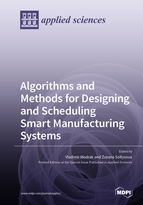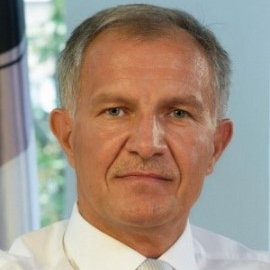Algorithms and Methods for Designing and Scheduling Smart Manufacturing Systems
A special issue of Applied Sciences (ISSN 2076-3417). This special issue belongs to the section "Mechanical Engineering".
Deadline for manuscript submissions: closed (20 January 2022) | Viewed by 24463
Special Issue Editors
Interests: industrial engineering; production planning; manufacturing management; optimization algorithms; production engineering; mass customization; optimization methods; logistics
Special Issues, Collections and Topics in MDPI journals
Interests: production planning and schedulin; manufacturing management; simulation; mass customization
Special Issues, Collections and Topics in MDPI journals
Special Issue Information
Dear Colleagues,
Smart manufacturing practice is undoubtedly considered a paradigm shift in manufacturing technology. This conception is part of the Industry 4.0 strategy or equivalent national policies and brings new challenges and opportunities for the companies that are facing tough global competition. Industry 4.0 should not only be perceived as one of many possible strategies for manufacturing companies, but as an important practice within organizations since it significantly increases the productivity of manufacturing processes and brings other benefits for companies and their customers. The introduction of smart manufacturing systems is associated with the adaptation of the Internet of Things, cyberphysical systems, artificial intelligence, advanced robotics, cloud technology, and so forth. Moreover, the implementation of these technologies is paving the way for the digital evolution, which is impacting almost all industries and sectors worldwide. However, recent studies have shown that pre-existing managerial methods and philosophies such as lean manufacturing, reconfigurable manufacturing systems or cellular manufacturing systems are of utter importance for the concept of smart manufacturing. In this context, manufacturing system design and scheduling methods should be further improved. As a prime example of co-existence traditional, existing manufacturing methods and I4.0 technologies are efforts to develop integrative models supporting both lean manufacturing tools and I4.0 technologies. This Special Issue aims to collect original contributions related to designing and scheduling smart manufacturing systems.
Potential topics include but are not limited to the following:
- Modern methods and techniques for designing layout manufacturing systems;
- Innovative approaches for solving manufacturing cell formation problems;
- Modelling and designing flexible and reconfigurable manufacturing systems;
- Heuristics and metaheuristics for solving facility layout design problems;
- Heuristics and metaheuristics for solving scheduling problems;
- Multiobjective methods and techniques for solving design problems;
- Modeling manufacturing processes for smart cyberphysical environments;
- Modeling assembly processes for mass customized manufacturing;
- Design of architecture for human–robot collaborative assembly systems;
- Multiobjective optimization of mixed-model assembly line balancing problems.
Prof. Vladimir Modrak
Dr. Zuzana Soltysova
Guest Editors
Manuscript Submission Information
Manuscripts should be submitted online at www.mdpi.com by registering and logging in to this website. Once you are registered, click here to go to the submission form. Manuscripts can be submitted until the deadline. All submissions that pass pre-check are peer-reviewed. Accepted papers will be published continuously in the journal (as soon as accepted) and will be listed together on the special issue website. Research articles, review articles as well as short communications are invited. For planned papers, a title and short abstract (about 100 words) can be sent to the Editorial Office for announcement on this website.
Submitted manuscripts should not have been published previously, nor be under consideration for publication elsewhere (except conference proceedings papers). All manuscripts are thoroughly refereed through a single-blind peer-review process. A guide for authors and other relevant information for submission of manuscripts is available on the Instructions for Authors page. Applied Sciences is an international peer-reviewed open access semimonthly journal published by MDPI.
Please visit the Instructions for Authors page before submitting a manuscript. The Article Processing Charge (APC) for publication in this open access journal is 2400 CHF (Swiss Francs). Submitted papers should be well formatted and use good English. Authors may use MDPI's English editing service prior to publication or during author revisions.
Keywords
- optimization
- facilities’ layout design
- assembly line balancing
- mass customization
- scheduling problem







